Heard it from a Scout: The pleasures and perils of portaging
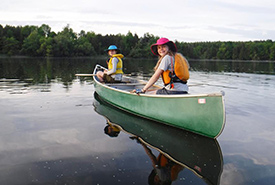
Portaging will take your canoe and camping adventures to the next level and help you explore nature’s hidden gems. (Photo by Scouts Canada)
Portaging is like going to the gym; you don’t always want to go, but you feel proud of yourself after working out. Portaging (carrying a boat over land, between bodies of water) is a fun activity that will take your canoe and camping adventures to the next level and help you explore nature’s hidden gems.
Through Scouts Canada, I have portaged canoes on many camping trips with my Venturer Company (ages 15 to 17) and Rover Crew (ages 18 to 26) and gained more confidence each time.
Here are some tips to help make your portaging adventures a success this summer.
Material matters
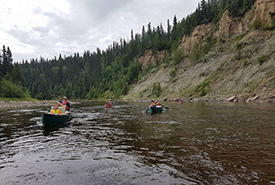
Different canoes have different purposes. (Photo by Scouts Canada)
Different canoes have different purposes, with certain materials faring better during portages than others. Avoid heavier canoes made of either aluminium, fiberglass or plastic. These types of canoes weigh approximately 31 to 36 kilograms. They’re good for general recreation, but heavy to carry. This may deter you from portaging very far on your adventure.
If you plan to portage, the ideal canoe materials are kevlar or carbon. These canoes are easier to carry, as they typically weigh only 16 to 25 kilograms. Here is a handy guide to help you find the right weight and material for your journey. Once you’ve picked your canoe, it’s time to head out on your trip.
Related blog posts
Carrying techniques
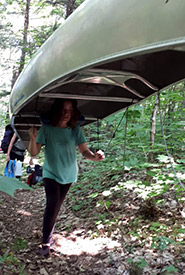
For longer portages, the "over-the-head" carry works best. (Photo by Scouts Canada)
After choosing the appropriate canoe, look for a map that provides each portage’s length and elevation changes so you can prepare. Knowing these details in advance will help you determine how to carry your canoe. For example, the classic "suitcase carry," with two to four people, works for short to medium-length portages with little elevation change and helps get everyone involved.
For longer portages, the "over-the-head" carry works best. For this, you and your partner lift the canoe over your heads. I used this carry when I first began portaging as a young Venturer Scout, but graduated to the ”solo carry” by my last year, as I gained more confidence in my abilities. A solo carry involves resting the yoke of the canoe on your shoulders while holding the gunnels with your hands for balance. This carry is more about technique than strength — meaning everyone can do it.
Lifting techniques
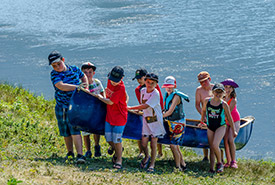
Lifting the canoe is easier with two or more people. (Photo by Blake Edwards)
Lifting the canoe is easier with two or more people. With two people, each person stands by a seat, putting both hands on the nearest side and lifting the canoe until it's perpendicular to the ground. Reach across the canoe and pull it up so it rests on your thighs. Reposition your hands so they're on opposite sides, then lift the canoe over your head. The solo version of this works similarly, but you begin by standing at the yoke instead. Make sure to practise the solo version before taking it to the trail alone.
Another two-person lifting method involves turning the canoe upside down, with one person lifting the front of the canoe high in the air while the other person lifts from the back. The person carrying the canoe stands under the yoke and balances the canoe on their shoulders. The solo version is similar, where the solo person lifts up the front of the canoe on their own and walks down it, moving their hands along the gunnels to keep the canoe above them.
Staying safe
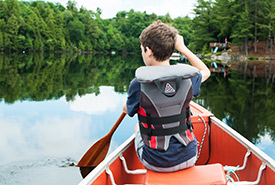
With the right information, gear and safety considerations in mind, it’s time to embark on a canoe trip that includes a portaging adventure! (Photo by iStock)
Events on the trail often don’t go as planned. For example, the weather could affect accessibility to certain trails, or an injury could happen if care isn’t taken while on the trail. Remember to go slow and take breaks during the portage. If you walk too quickly on the portage trail, you risk tripping or spraining your ankle on rocks or tree roots.
Before you start the portage, dry your feet off completely before putting on your hiking boots. This will help minimize any rubbing that may happen, which often leads to blisters.
Your shoulders might also be sore from carrying the canoe. I recommend investing in a yoke cushion — comfortable padding that protects the shoulders, as they support the weight of the canoe — and stretching often. The yoke cushion massively improved my comfort level.
If you want more tips, check out nearby outdoor stores or canoe rental locations, as they might be able to offer more specific advice. To find other adventure seekers, check out Scout groups near you. With the right information, gear and safety considerations in mind, it’s time to embark on a canoe trip that includes a portaging adventure!
"Heard it from a Scout" is written by members of Scouts Canada’s Youth Spokesperson program. This post was authored by Deanna Divito.

